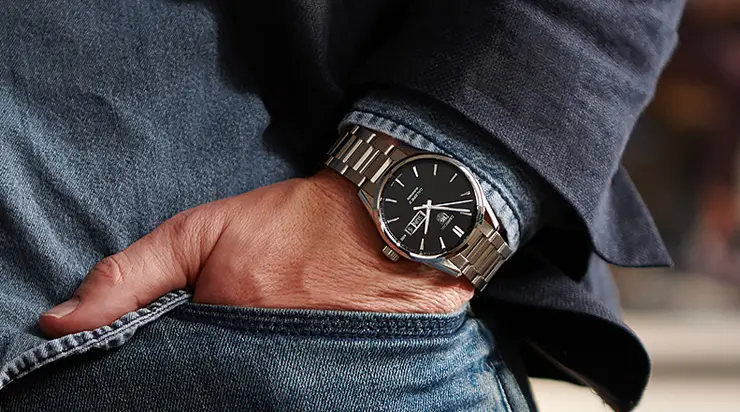The practice of wearing watches on the left hand is a tradition that has endured through generations, rooted in both practicality and cultural norms.
While there isn’t a single definitive reason why watches are typically worn on the left hand, several factors contribute to this common practice.
One of the primary reasons for wearing a watch on the left hand is convenience, especially for right-handed individuals. Placing the watch on the non-dominant hand allows for easier manipulation of the timepiece, such as adjusting the crown or pressing buttons, without interfering with daily tasks. Since the majority of people are right-handed, wearing the watch on the left wrist minimizes potential discomfort or inconvenience.
Additionally, wearing a watch on the left hand is thought to offer better protection for the timepiece. For right-handed individuals, the left hand tends to be less active and subjected to fewer impacts and movements throughout the day. By placing the watch on the left wrist, there is less risk of accidentally bumping or damaging the watch during various activities.
Cultural and historical factors also play a role in the preference for wearing watches on the left hand. In many Western societies, including Europe and North America, watches have traditionally been worn on the left wrist.
This convention likely originated from pocket watches, which were typically carried in the left pocket and attached to a chain worn around the neck or waist. When wristwatches became popular in the early 20th century, people naturally continued to wear them on the left wrist out of habit.
Furthermore, there are practical considerations related to ergonomics and comfort. The left wrist is often favored because it is closer to the heart, making it easier to glance at the time and check the watch throughout the day. Additionally, wearing the watch on the inside of the left wrist can reduce glare and make the watch face more readable, especially in bright sunlight.
While the majority of people wear watches on the left hand, there are exceptions based on personal preference and cultural practices. In some cultures, such as Japan, it is more common to wear watches on the right wrist.
Ultimately, the choice of which wrist to wear a watch on is a matter of individual comfort, habit, and cultural norms. Whether worn on the left or right hand, the watch remains an indispensable accessory, serving as both a functional timekeeping device and a stylish fashion statement.



